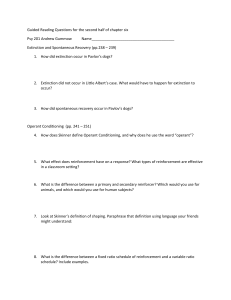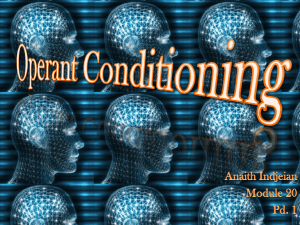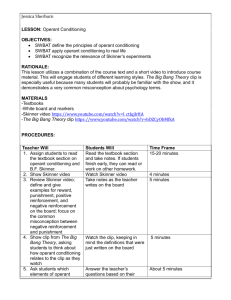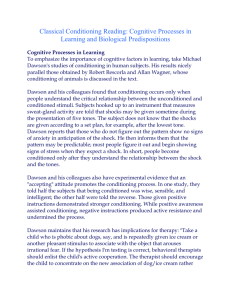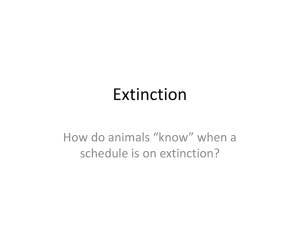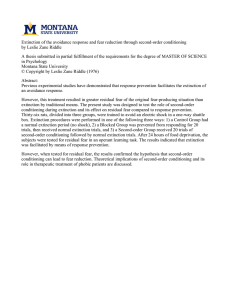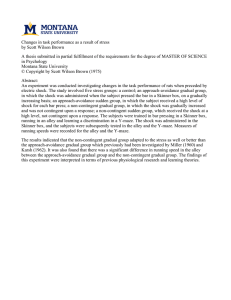Learning 1
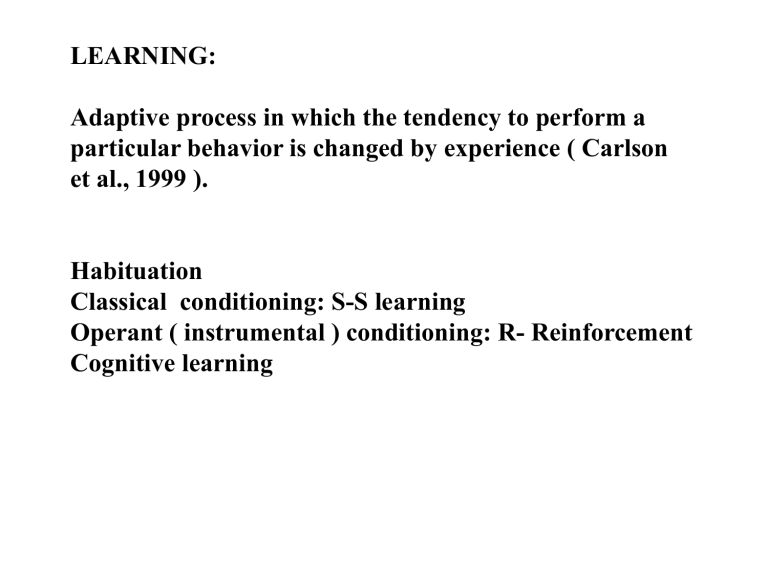
LEARNING:
Adaptive process in which the tendency to perform a particular behavior is changed by experience ( Carlson et al., 1999 ).
Habituation
Classical conditioning: S-S learning
Operant ( instrumental ) conditioning: R- Reinforcement
Cognitive learning
Classical Conditioning: Watson’s Little Albert
CS - Rabbit -- Furry Objects US - Loud Noise
UR - Fear (screaming, high HR) CR - Fear (screaming, low HR)
CR -- Anticipatory Response
Instrumental (Thorndike) / Operant (Skinner) Conditioning
Organism operates on Environment
Behavior instrumental in obtaining reward or avoiding punishment
R
Positive S -- S after R increases R -money for work
R
Negative S -- Removal of S increases R -fear leads to studying
Positive Pun. -- Application of S decreases R -slap on wrist
Negative Pun. -- Removal of S decreases R -girl stops smiling when you do s.t. stupid ;R-cost
R
Extinction -- R produces no longer expected consequences (S ).
Spontaneous recovery—relearning of response
Partial reinforcement extinction effect (PREE) -- Frustration or
Discrimination Hypotheses
Intermittent Reinforcement Schedules (Skinner):
Paid Weekly
Degree after passing
20 courses
‘pop’ quizzes
Gambling machines
Extinction slowest after variable schedules -- Discrimination Hypoth. (less predictable).
1.
Outcome independent of what
O does
1. Outcome depends on what O does
2. Strong reliable S-R relation already exists
3. Usually behavior controlled by autonomic NS
2. Variable Rs prior to learning
3. Usually behavior controlled by somatic NS
4. Involves voluntary Rs
4. Involves involuntary Rs
5. Involves feelings or expectancies
5. Involves overt acts
6. Change is mainly in effectiveness of a S 6. Change is mainly in the strength of a R
7. S-S learning -- S predicts other S 7. R-Reinforcement learning --
Act - Outcome; Means - End
O = organism; S = stimulus; R = response; NS=nervous system
Shuttle Box:
(two-compartment escape & avoidance apparatus)
Electric shocks can be provided to the floor of either compartment.
If no signal precedes the shock, the animal learns to escape the shock by running from one compartment to the other when the shock comes on. If a signal ( such as light) precedes the shock in every trial, the animal learns to avoid the shock by running from one compartment to the other as soon as the signal comes on.


